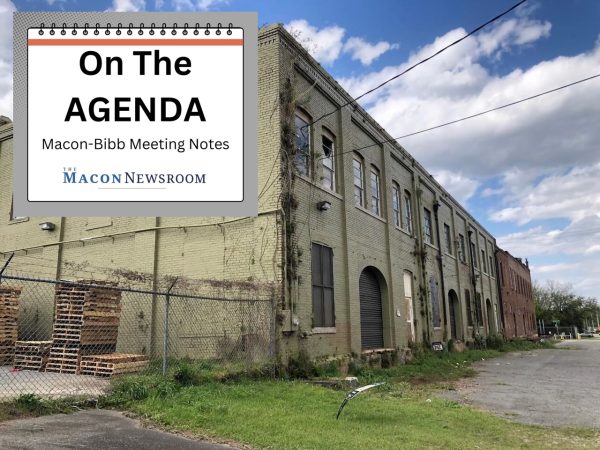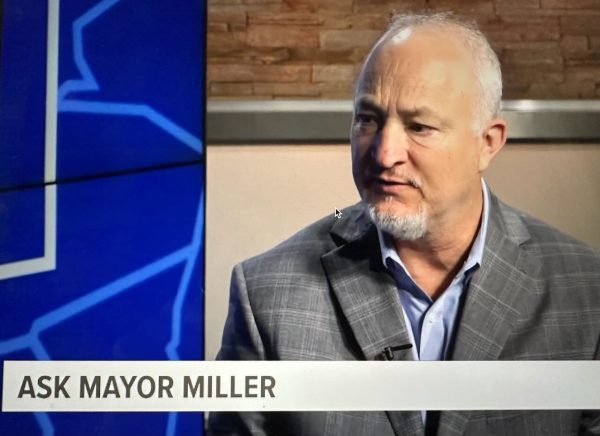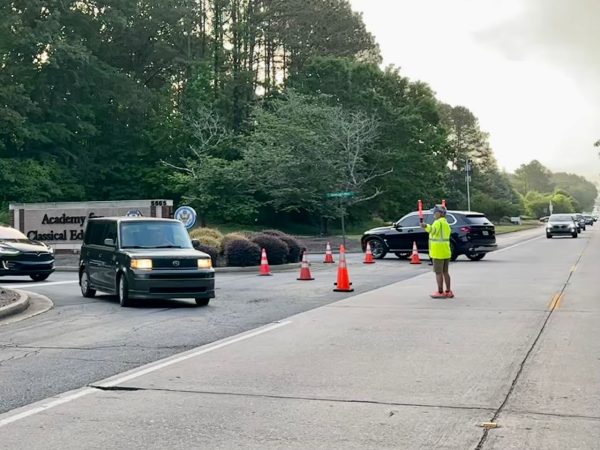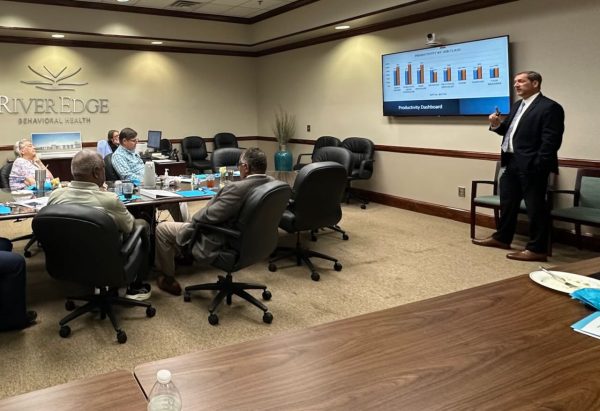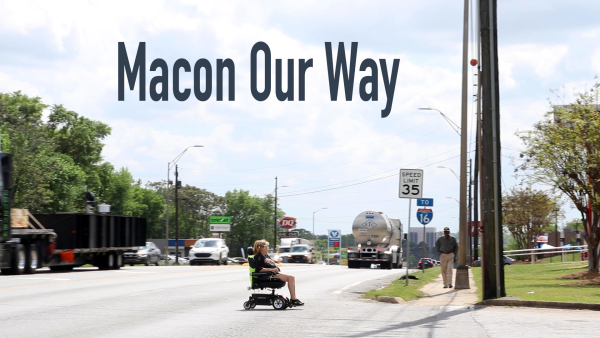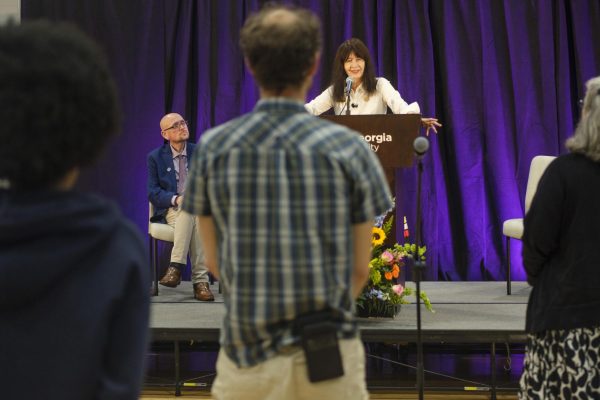2020: Couple staying in Robins AFB encroachment zone as solar field encircles them
A south Bibb County home sits dismantled at the corner of Kearnes and McArrell drives where Georgia Power will begin building a 650 acre solar farm in 2020.
Ronald and Kristine Snyder moved from the Robins Air Force Base encroachment zone in the 90s and they vow not to uproot themselves again.
“We’re too old to move and start over,” Ronald Snyder said Wednesday, just hours after the Central Georgia Joint Development Authority got an update on the 650-acre solar farm Georgia Power is building north of the base.
“We’ve been living under airplanes for the last 40 years,” said Snyder, 73, who has retired from work at the base and Middle Georgia Regional Airport.
In the mid-90s, the Snyders were told they had to leave their St. Clara Drive home after a 1988 Joint Land Use Study mapped out they were in the primary danger zone around the base.
The Snyders and 28 other parcels of land around them were within 6,000 feet of a runway and could be threatened if an aircraft crashed upon takeoff or landing.
“At that time, they didn’t give us a choice with imminent domain and all that,” Ronald Snyder said.
For the new massive $249 million solar project managed by the Joint Development Authority, all but about 30 parcels on the site have been acquired and there are no plans to force anyone out, said project manager Susan Landfried.
“Not at all. That’s not what we’re doing. We want completely voluntary sales,” Landfried said.
After the first of the year as the bulldozers come to demolish a handful of remaining abandoned houses, the Snyders and a scattering of neighbors on McArrell Drive and Feagin Road area will be getting letters from the authority.
“To let them know that area is about to move quickly from very passive and quiet to a very active construction zone,” said Laura Mathis, executive director of the Middle Georgia Regional Commission. “The authority is still open for business for anyone who wants to sell.”
Over the next 12 months with a maximum of 400 construction workers, Georgia Power will be building the solar farm between McArrell Drive and Ga. 247.
Contractors will skip over lots where property owners decided not to sell and build around those still living there, Landfried said. Some of those parcels are vacant land.
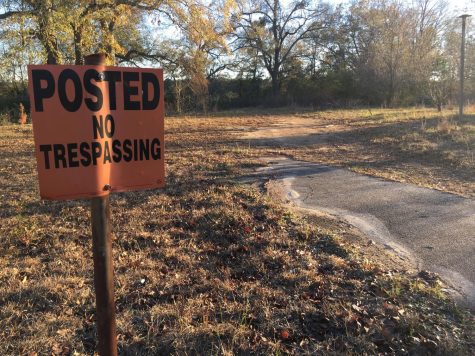
Most of the 300 or 20 properties just north of Robins Air Force Base in south Bibb County have been cleared for a 650 acre Georgia Power solar field.
William Houser, the senior project manager for Georgia Power, proudly told the authority Wednesday the 128 megawatt solar facility would make significant upgrades to the electrical infrastructure of the base and will eliminate 4.2 miles of transmission exposure.
“I venture to say Robins will be the most resilient (military base) in the nation,” Houser said. “All substations that service Robins will be inside the fence line so they can protect it.”
All four of the base’s transmission lines are being linked so that electricity can be rerouted in the event one of the systems does down.
The utility company plans to leave a natural buffer in the northeast corner of the project that is adjacent to Native American cultural lands and held meetings with tribal representatives to secure their support, Houser said.
Not only is the project a beneficial use of land around the encroachment zone, Houser said, it supports the mission of the base and enhances the regional energy reliability.
“Any time you have a generation source near the load it’s extremely reliable,” he told the authority. “We’re adding fuel diversity to the mix in Georgia and we’re proud of this.”
Macon-Bibb County Commissioner Elaine Lucas had a huge smile on her face once the subject of new tax revenue came up.
Although Georgia Power will be leasing the land for 35 years, the company will be paying taxes on the improvements made in the project that is estimated to cost about a quarter of a billion dollars.
“We didn’t ask for our abatement or anything so we’ll pay what you bill us,” Houser assured the authority members.
That money will wind up in local coffers.
In August of 2012, Bibb, Houston and Peach counties agreed to help fund the acquisition of land.
Both Houston and Bibb chipped in $6 million each from SPLOST funds and Peach added another $400,000 due to the expected economic boost and added protection for Robins during Base Realignment and Closure Commissions, Mathis said. Encroachment is a top issue considered as legislators decide which bases to close.
Once the solar field is operating, taxes Georgia Power pays will first pay off bonds issued to finance the project and payback money spent by Houston and Peach counties, which should take about seven to eight years, Mathis said.
Macon-Bibb County will collect the rest of the revenue during the life of the 35-year lease as the solar panels are within the county border.
“We’re getting ready to start moving dirt and building so I’m excited,” Houser said.
The authority has reserved a baseline of $1 million to purchase additional property, if people like the Snyders decide to sell, Mathis said.
“We don’t know how many people want to sell in 2020,” she said.
Kristine Snyder has been anticipating the day when her neighborhood which was once about 300 residences no longer exists.
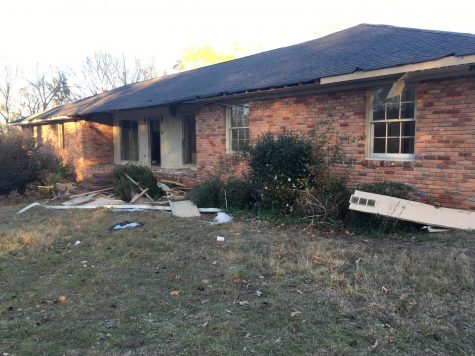
A vacant house at 9194 McArrell Drive has been stripped before bulldozers come to make way for the Georgia Power solar field to service Robins Air Force Base and local utility customers. In early 2019, the owners accepted a $340,000 buyout for the 13.5 acres and nearly 2,700 sq. ft. home valued at just under $127,000, according to Bibb County tax records.

The abandoned pool behind a brick ranch on McArrell Drive awaits demolition in south Bibb County where a Georgia Power solar field will be built in 2020.

Decorative tile lays in the ruins of a brick ranch with a pool on McArrell Drive in south Bibb County where a Georgia Power solar field will be built in 2020.
Already friends nearby have died or moved away. Many homes have been removed leaving phantom driveways, drained swimming pools and foundations as the only hint of what life was like before.
When the Snyders moved to lower McArrell Drive, it was nothing but trees out there, they said.
Now remnants of a deconstructed house sit at the corner of Kearnes Drive after the property owner gave up trying to rent the place, they said.
“We see the trucks all the time and they’ve been taking down all the transformers of those that have left,” Kristine Snyder said.
When they agreed to move out of the encroachment Zone 1, she wanted assurance that they’d be left alone on their new land.
“You’re fine,” she was told, but about four years later came talk of clearing more land.
“The only thing that hurts is driving down the road and seeing that (dilapidated) building over there,” Mrs. Snyder said of her former neighbor’s abandoned home.
For the last couple of years, they’ve anticipated the day when bulldozers and an army of heavy equipment would be clearing the land.
“We’ve been waiting for this,’ she said. “I’ve told Ronald we need to start looking.”
He doesn’t seem to want to budge even with the thought of rows of solar panels all around.
“We’re happy right here.”
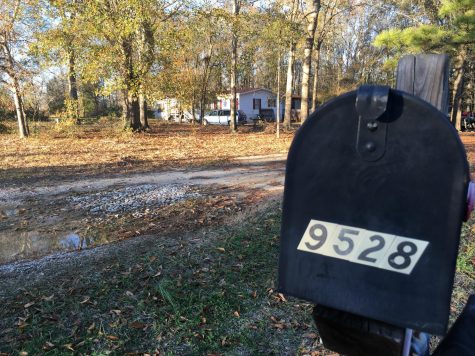
The Snyders were forced off St. Clara Drive in the 90s due to encroachment issues with Robins Air Force Base and moved here to McArrell Drive where they’ve been asked to sell again.
Information from The Telegraph archives contributed to this report. Contact Civic Reporting Senior Fellow Liz Fabian at 478-301-2976 or email fabian_lj@mercer.edu.




